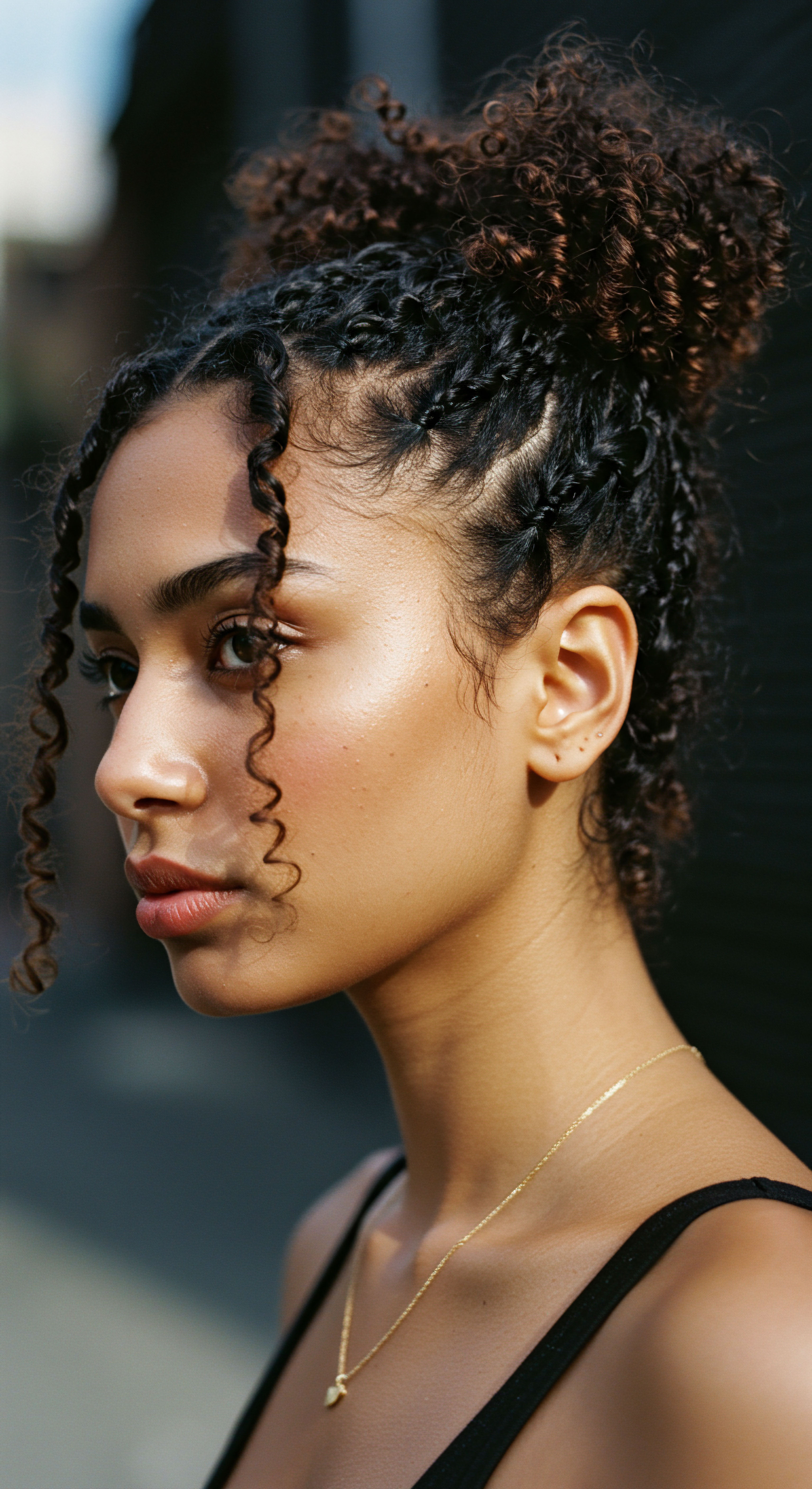
Roots
The quiet ritual of washing coiled hair, a cherished moment of cleansing and renewal, often carries an unseen partner ❉ the very water that flows from our taps. This elemental liquid, so seemingly pure, holds within its depths a collection of dissolved minerals, each capable of leaving its subtle yet undeniable mark upon the delicate canvas of natural hair color. For those with spirals, kinks, and waves, understanding this invisible presence becomes a grounding point, a gentle step toward preserving the intrinsic vibrancy and health of their strands.
Hair, at its fundamental core, is a complex protein structure, primarily keratin, formed from amino acid chains. These chains are held together by various bonds, contributing to the hair’s strength, elasticity, and its ability to hold pigment. The outer layer, the Cuticle, resembles overlapping shingles, serving as a protective shield.
When water interacts with hair, particularly warm water, these cuticle layers can gently lift, allowing substances to enter the hair shaft. This interaction is where the journey of mineral influence begins, a quiet conversation between the microscopic world of water and the intricate architecture of hair.

What are These Unseen Water Guests?
The term “hard water” frequently surfaces in discussions about hair care, signifying water with elevated concentrations of dissolved minerals. The primary contributors to water hardness are Calcium and Magnesium. These bivalent ions, with their positive charges, are drawn to the negatively charged surface of hair strands, particularly when the cuticle is open.
Beyond these common players, other metallic elements, though often present in smaller quantities, wield a more pronounced ability to alter hair’s natural hue. These include copper, iron, and manganese, each leaving its distinct signature on the hair’s appearance.
Consider the very plumbing that delivers water to our homes. Older pipes, often made of copper or iron, can slowly corrode, releasing microscopic particles into the water supply. This subtle leaching means that even in areas with naturally soft water, metallic ions can become unexpected companions in our daily wash.
Furthermore, some municipalities add copper sulfates to water as an algaecide, a measure to control microbial growth, unknowingly introducing a color-altering agent into the system. The confluence of these factors creates a varied mineral profile in tap water across different regions, painting a diverse landscape of potential effects on hair.
Tap water, though seemingly clear, carries dissolved minerals that can subtly alter coiled hair’s natural color and texture.
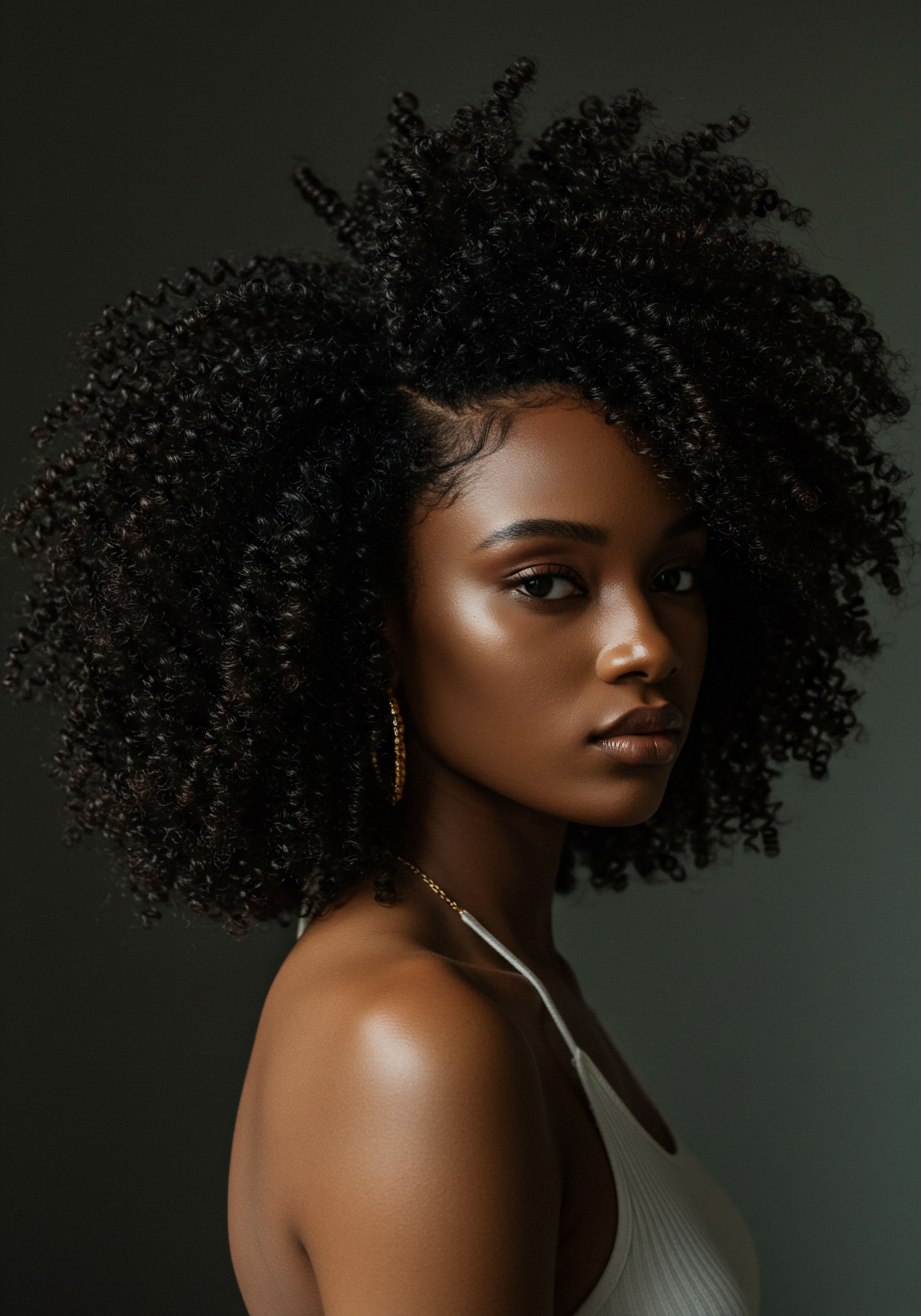
How do Minerals Cling to Hair?
Hair strands possess a natural negative charge, a characteristic that makes them attractive to positively charged mineral ions. This electrostatic attraction causes minerals to cling to the hair’s surface, forming a microscopic film. This mineral accumulation is not merely superficial; these particles can penetrate the cuticle, especially when the hair is porous or has undergone chemical treatments like coloring or relaxing.
Once inside, they can interact with the hair’s natural pigments, melanin, or with residual chemical processing agents, leading to visible changes in color. The more porous the hair, a common characteristic of coiled textures due to their lifted cuticle structure, the more readily these minerals can deposit and leave their mark.
| Mineral Type Copper |
| Primary Source in Water Corroding pipes, algaecides |
| Observed Color Alteration Green tint (light hair), darkening (dark hair) |
| Mineral Type Iron |
| Primary Source in Water Well water, corroding pipes |
| Observed Color Alteration Orange, brassy (light hair), red highlights (dark hair) |
| Mineral Type Calcium |
| Primary Source in Water Hard water deposits, groundwater |
| Observed Color Alteration Dullness, faded color, lack of shine |
| Mineral Type Magnesium |
| Primary Source in Water Hard water deposits, groundwater |
| Observed Color Alteration Dullness, faded color, weighing down |
| Mineral Type Manganese |
| Primary Source in Water Groundwater |
| Observed Color Alteration Orange, red highlights, dullness |
| Mineral Type These minerals adhere to hair, especially porous strands, influencing color and texture. |
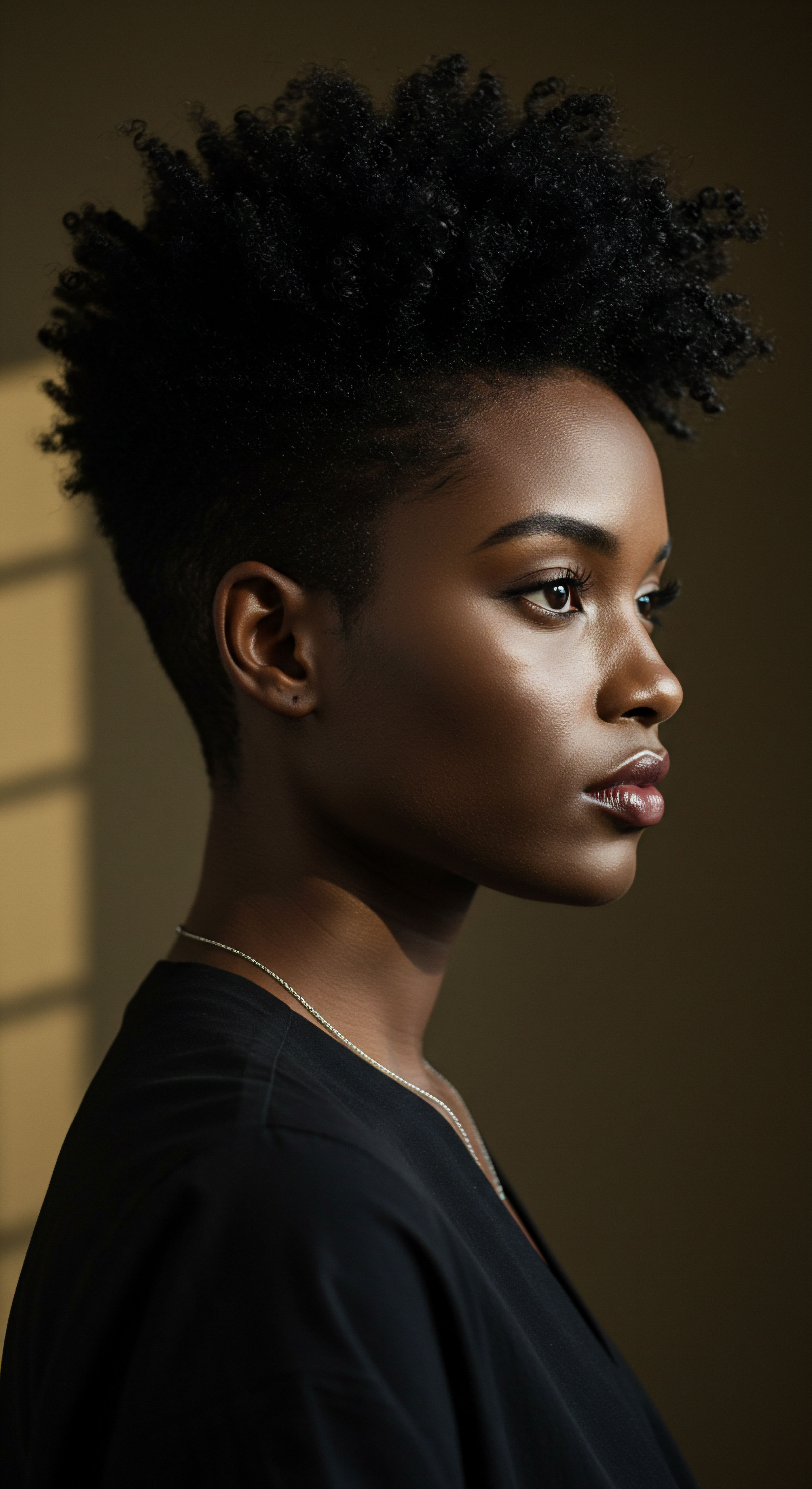
Ritual
With an understanding of the unseen elements in our water, the daily and weekly rituals of hair care take on a new significance. Each wash, each conditioning session, each moment of styling becomes an opportunity to either mitigate or inadvertently compound the effects of tap water minerals on coiled hair’s natural color. The gentle wisdom we seek lies in recognizing these interactions and adapting our practices to protect and preserve the hair’s inherent beauty.
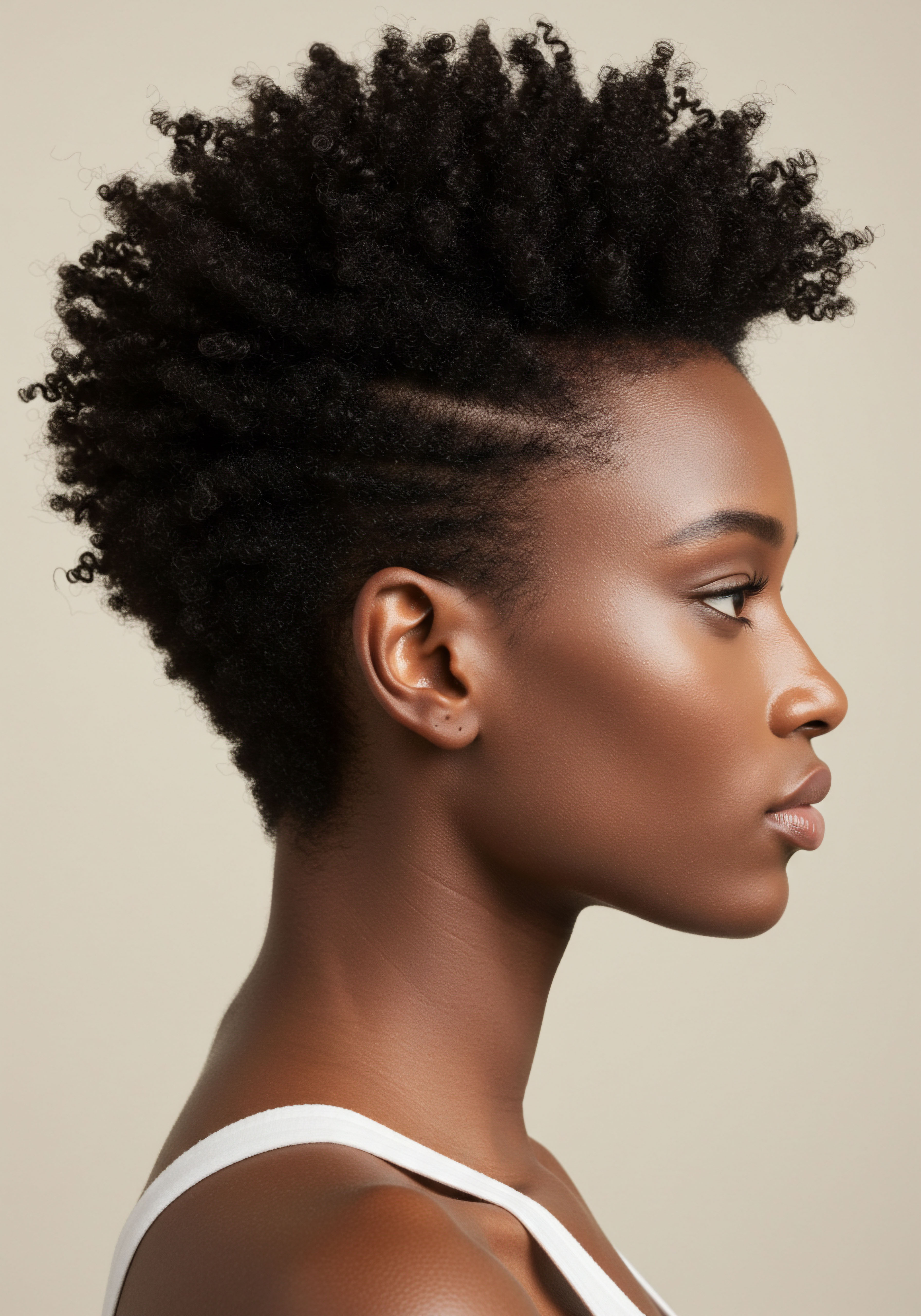
How does Mineral Presence Change Daily Hair Care?
The tangible feeling of hair after a wash often signals the water’s mineral content. Coiled hair, renowned for its propensity towards dryness, becomes even more vulnerable when hard water is its regular companion. The mineral deposits, particularly calcium and magnesium, form a subtle film on the hair shaft. This coating prevents the hair from absorbing moisture effectively, leading to a feeling of dryness and a lack of suppleness.
The hair may feel stiff, less pliable, and exhibit increased friction between strands. This phenomenon can make detangling more challenging, increasing the likelihood of breakage, and ultimately affecting the hair’s ability to coil and clump in its natural, desired pattern.
Furthermore, the presence of these minerals can diminish the effectiveness of hair care products. Shampoos may struggle to create a rich lather, necessitating the use of more product to achieve a cleansing sensation. Conditioners, too, might find their hydrating and softening agents hindered by the mineral barrier, leaving hair feeling less nourished than anticipated. This leads to a cycle where more product is used, yet the desired results remain elusive, adding to frustration and potentially to product buildup that further weighs down the hair.
Mineral deposits from tap water can hinder moisture absorption and product efficacy, making coiled hair feel dry and stiff.
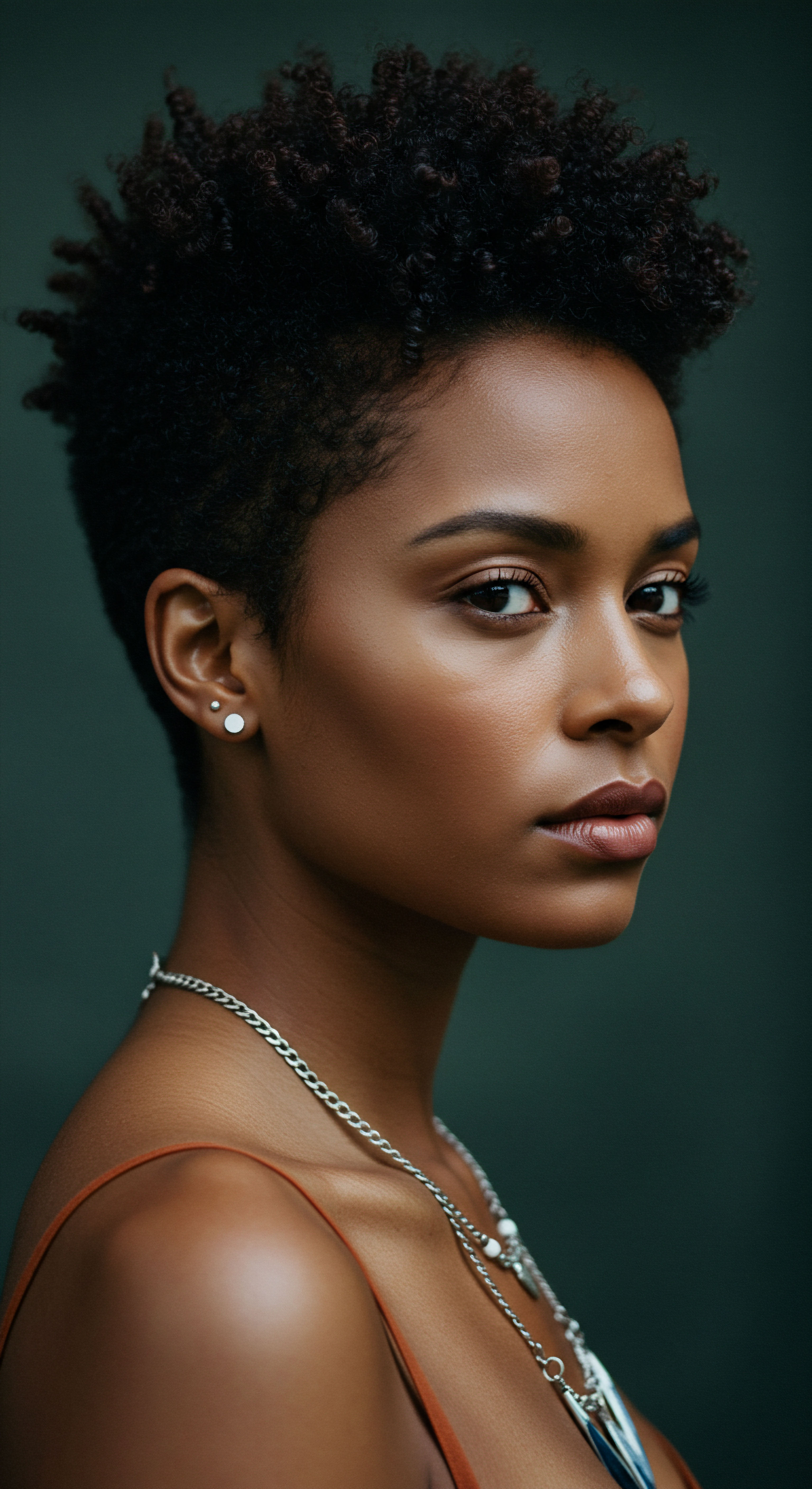
Can Routine Washing Affect Hair Color?
For individuals with natural hair color, the constant exposure to mineral-laden water can lead to a gradual shift in hue. Copper, for instance, has a particular affinity for keratin and, upon oxidation, can impart a greenish tint to lighter coiled strands, while causing darker hair to appear duller or even take on a subtle dark cast. Iron, another common culprit, can deposit as rust particles, giving lighter hair an orange or brassy appearance and lending reddish highlights to darker coils.
Manganese can contribute to similar unwanted warm tones. These color alterations are often cumulative, becoming more apparent over time with repeated exposure.
For those who color their hair, the interaction between water minerals and hair dye is even more pronounced. The minerals can react with the dye pigments, accelerating color fading and distorting the intended shade. A compelling study published in the Journal of Cosmetic Dermatology in 2021 revealed that color-treated hair experienced 30% Faster Color Fading when washed with hard water compared to soft water.
This highlights a significant challenge for maintaining vibrant, salon-fresh color in hard water environments. The mineral accumulation can also interfere with future chemical processes, leading to unpredictable results during coloring or relaxing treatments, as the metals can act as catalysts for oxidative reactions within the hair shaft.
- Copper Buildup ❉ Leads to green tones in light hair and dullness in dark hair.
- Iron Deposits ❉ Causes orange or brassy hues in light hair, and red undertones in dark hair.
- Hardness Minerals ❉ Calcium and magnesium can diminish color vibrancy and accelerate fading.

What Measures can Mitigate Mineral Impact?
To counteract the effects of water minerals, several approaches can be integrated into a hair care regimen. One primary method involves the use of Chelating Shampoos or treatments. These products contain ingredients that bind to mineral ions, effectively removing them from the hair shaft.
Regular use, particularly for those in hard water areas or who swim frequently, can help to prevent accumulation and maintain hair clarity and color. Some specialized treatments are designed for salon use, offering a more intensive mineral removal process prior to chemical services, ensuring optimal color results and minimizing damage.
Another practical consideration is the installation of a Shower Filter. These devices attach directly to the showerhead and are designed to reduce the concentration of minerals and other impurities, such as chlorine, in the water before it reaches the hair. While not a complete water softening solution for the entire home, a shower filter offers a targeted approach to protecting hair during washing rituals, providing a gentler environment for cleansing and conditioning.
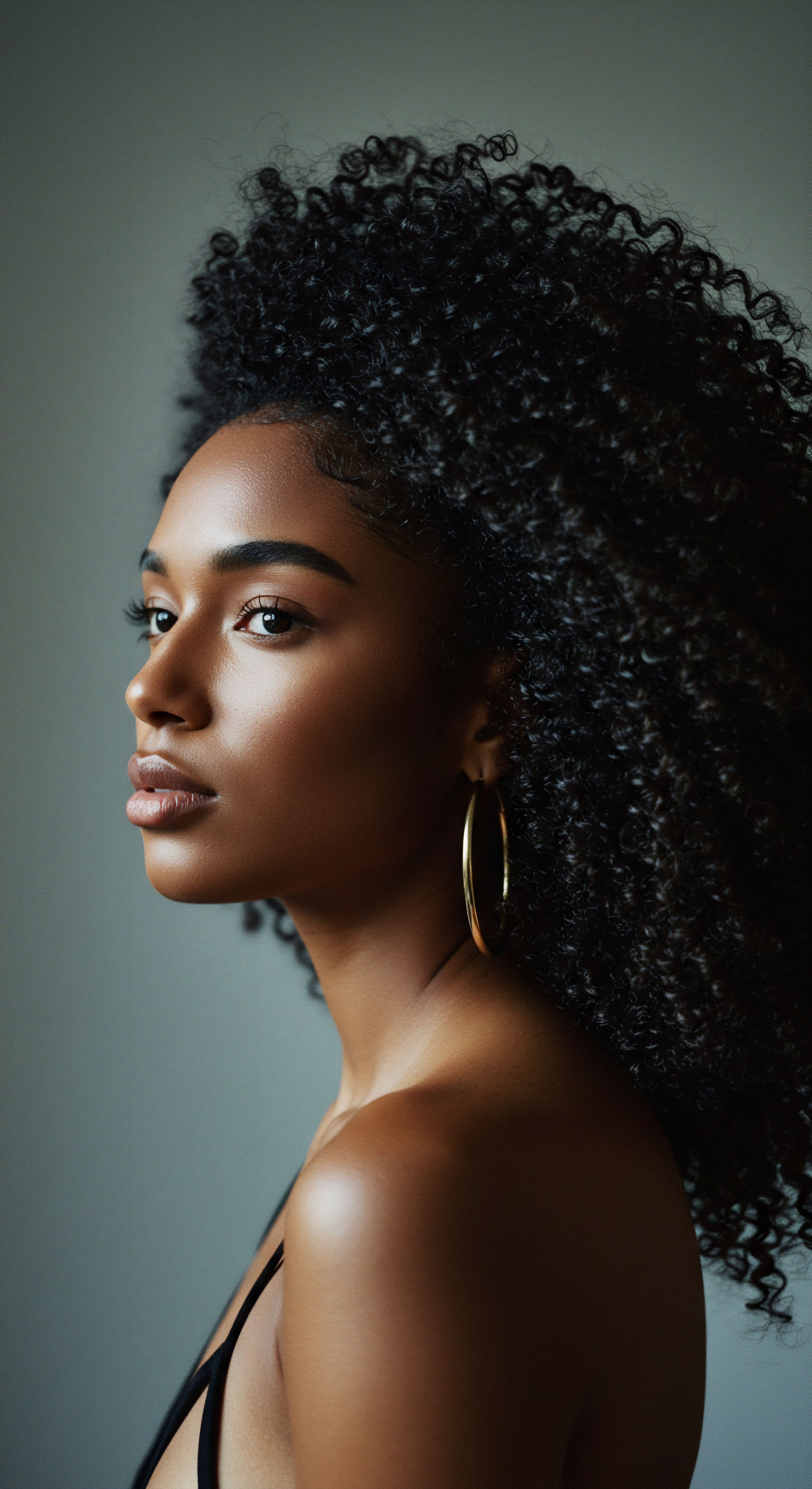
Relay
Beyond the immediate visual and tactile shifts, what deeper scientific and cultural currents flow beneath the surface of water’s interaction with coiled hair’s color? The inquiry into tap water minerals and their influence stretches beyond mere cosmetic concerns, inviting a more profound exploration of the intricate interplay between environmental elements, hair biology, and long-standing cultural practices. This space allows for a more detailed consideration of the science and the broader implications for textured hair health.
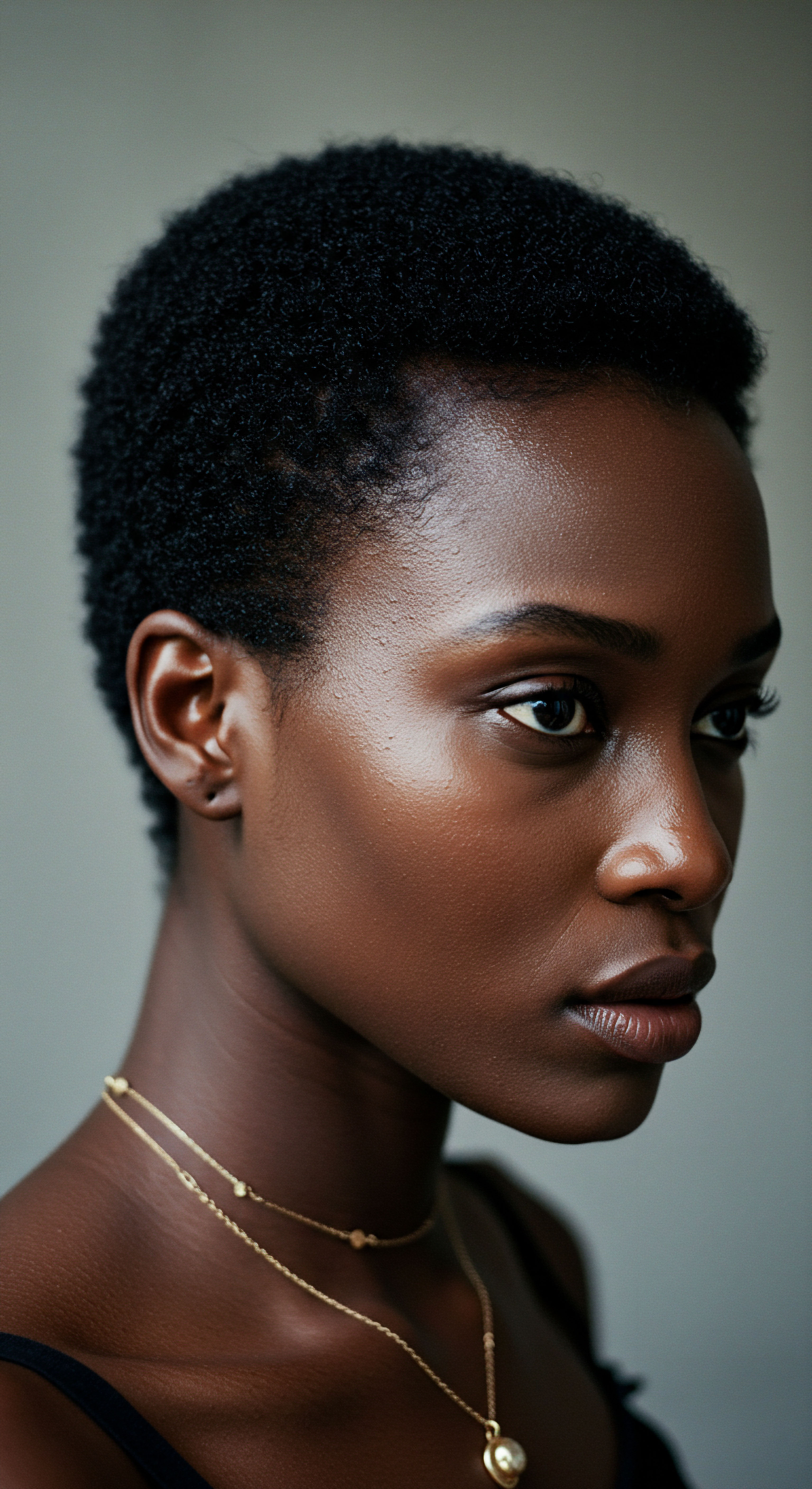
How do Mineral Ions Alter Hair’s Structure?
The effect of water minerals on hair extends to its very architecture. The outer cuticle, responsible for much of the hair’s shine and protection, is particularly susceptible. Calcium and magnesium ions, the hallmarks of hard water, can accumulate on these overlapping scales, creating a rough, uneven surface. This roughened cuticle not only diminishes light reflection, leading to a dull appearance, but also makes the hair more prone to tangling and mechanical damage during styling and manipulation.
A 2016 study, for instance, showed that hard water exposure resulted in a “ruffled appearance” and decreased thickness in hair samples after a month of washing. This structural alteration can compromise the hair’s natural strength and elasticity, rendering coiled strands more vulnerable to breakage, a particular concern for textures that already possess a delicate protein matrix.
Furthermore, the pH of tap water plays a subtle but significant role. Hair’s natural pH is slightly acidic, typically between 4.5 and 5.5. Hard water, conversely, tends to be more alkaline, with a pH often ranging from 8 to 9.
This disparity can cause the hair cuticle to lift more significantly, leaving the internal cortex more exposed to mineral penetration and environmental stressors. The interaction between alkaline water and the hair’s acidic mantle can also affect the integrity of the hair’s protein bonds, potentially leading to increased porosity and further susceptibility to mineral deposition and color changes.
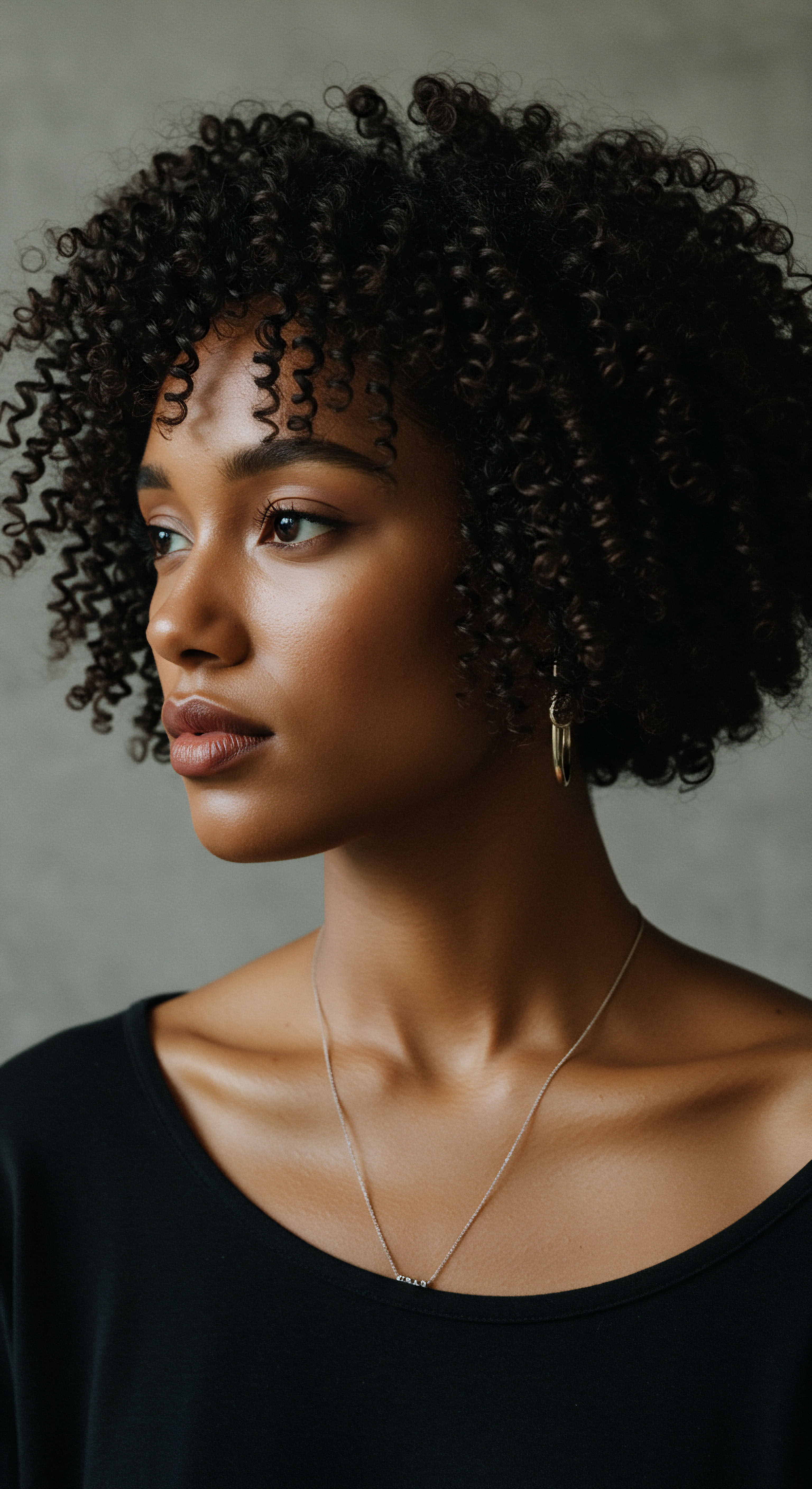
What are the Long-Term Consequences of Mineral Buildup?
Chronic exposure to mineral-laden water can have cumulative, long-term consequences for coiled hair. The persistent film of mineral deposits can hinder the scalp’s natural processes, potentially leading to irritation, dryness, and flaking. This environment can impede healthy hair growth and exacerbate existing scalp conditions.
The continuous stripping of natural oils and the diminished effectiveness of moisturizing products can leave hair in a state of perpetual dehydration, making it brittle and less resilient over time. A 2018 study published in the International Journal of Trichology indicated that prolonged exposure to hard water can weaken hair strands, although the study also noted that regular shampoo and conditioner use could help mitigate these effects.
Beyond the physical alterations, the aesthetic impact of color distortion can affect one’s self-perception and hair journey. The subtle shifts in natural color, the brassy undertones, or the dulling of vibrancy can detract from the celebrated appearance of coiled hair, leading to a cycle of seeking stronger products or more frequent chemical treatments, which in turn can further stress the hair. This deeper understanding calls for a holistic approach to hair care, one that acknowledges the environmental factors at play and seeks balance.
Consider the cultural significance of hair within Black and mixed-race communities, where hair is often seen as a direct link to heritage, identity, and personal expression. When tap water alters the natural color or texture, it can touch upon a deeper sense of self. The frustration of fighting an invisible opponent in one’s own home can become a quiet struggle, underscoring the need for accessible knowledge and practical solutions that honor the hair’s inherent beauty and cultural weight.
- Chelating Agents ❉ Ingredients like EDTA or phytic acid bind to metal ions, removing them from hair.
- Acidic Rinses ❉ Diluted apple cider vinegar can help to rebalance hair’s pH and close the cuticle, reducing mineral adherence.
- Shower Filters ❉ These devices attach to the showerhead, reducing mineral content before water reaches the hair.
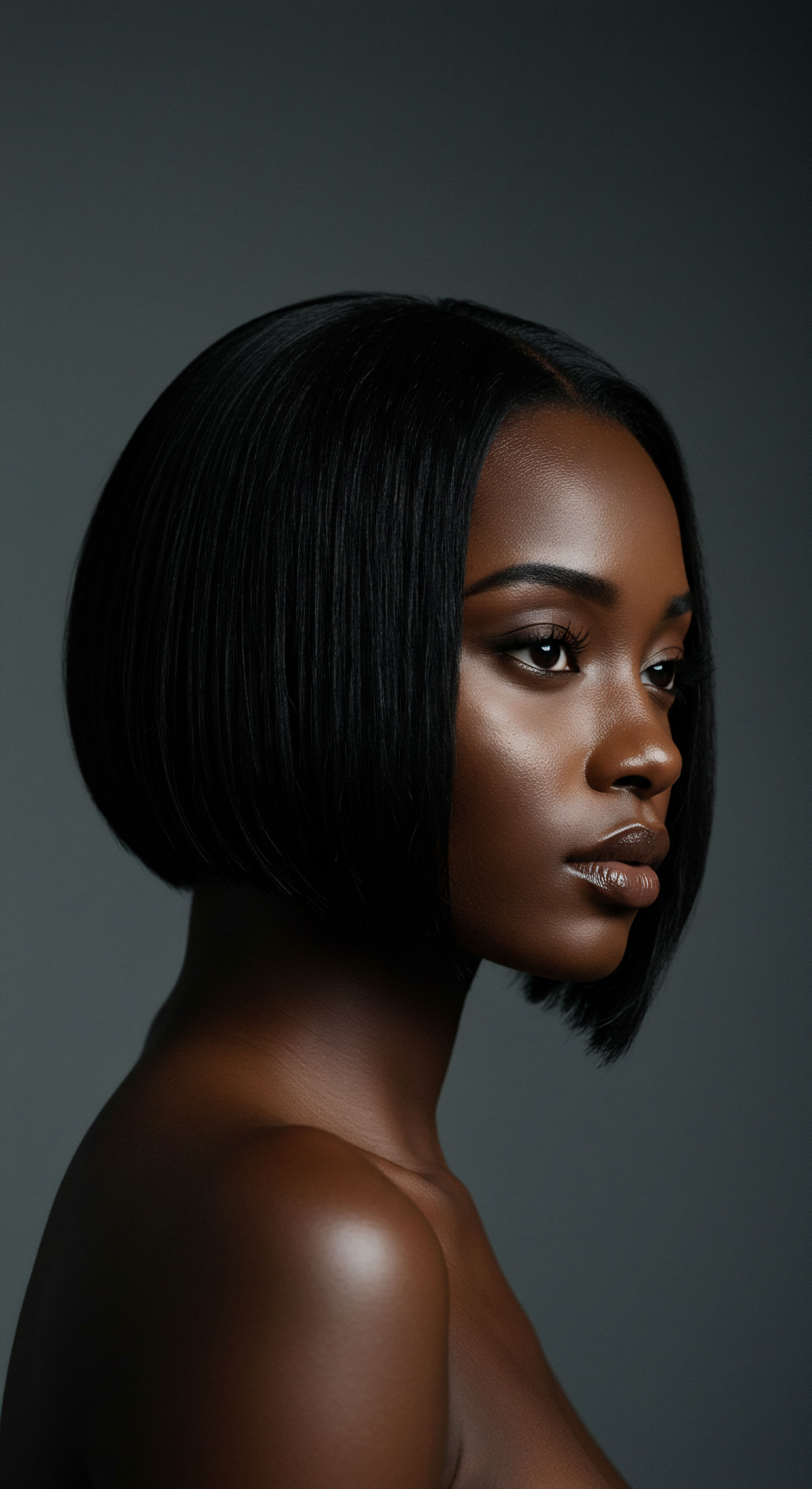
Are There Scientific Methods for Detecting Hair Minerals?
The scientific community has developed methods to precisely quantify mineral content in hair. Techniques such as Inductively Coupled Plasma Mass Spectrometry (ICP-MS) or Atomic Absorption Spectrometry (AAS) can analyze hair samples to determine the exact concentrations of various elements, including copper, iron, calcium, and magnesium. These analytical methods provide objective data on the mineral burden within hair fibers, offering insights into long-term exposure and potential correlations with observed hair changes. For instance, studies have used techniques like scanning electron microscopy (SEM) to visualize the surface deposition of minerals on hair shafts, revealing the abrasive textures and decreased thickness associated with hard water exposure.
The field of trichology, dedicated to the study of hair and scalp health, increasingly incorporates water quality into its assessments. Trichologists recognize that seemingly minor environmental factors, like tap water mineral composition, can significantly influence hair’s cosmetic appearance and overall well-being. This specialized knowledge helps individuals pinpoint the root causes of hair concerns that might otherwise remain unexplained, guiding them toward tailored solutions that go beyond conventional product recommendations. Understanding the elemental composition of the water we use is a quiet revolution in hair care, moving beyond surface-level concerns to a truly informed approach.
| Mineral Copper |
| Typical Concentration in Hair (μg/g) 10-200 |
| Observed Effect at Elevated Levels Green tint (light hair), dullness (dark hair), interference with color processing |
| Mineral Iron |
| Typical Concentration in Hair (μg/g) Trace to 500+ |
| Observed Effect at Elevated Levels Orange/brassy tones (light hair), red highlights (dark hair), dullness |
| Mineral Calcium |
| Typical Concentration in Hair (μg/g) Varies significantly with water hardness |
| Observed Effect at Elevated Levels Stiffness, dullness, reduced lather, accelerated color fading |
| Mineral Elevated mineral concentrations in hair can visibly alter its color and texture over time. |

Reflection
The journey through the subtle yet profound influence of tap water minerals on coiled hair’s natural color invites us to pause and consider the interconnectedness of our environment with our personal well-being. It is a reminder that beauty is not merely skin deep, or even cuticle deep, but rather a reflection of countless unseen interactions. The resilience of coiled hair, its ability to retain its unique patterns and pigments despite these external pressures, is a testament to its inherent strength. As we continue to seek knowledge and gentle practices, we move closer to a harmonious relationship with our hair, celebrating its natural state and equipping ourselves with the understanding to protect its vibrant spirit.
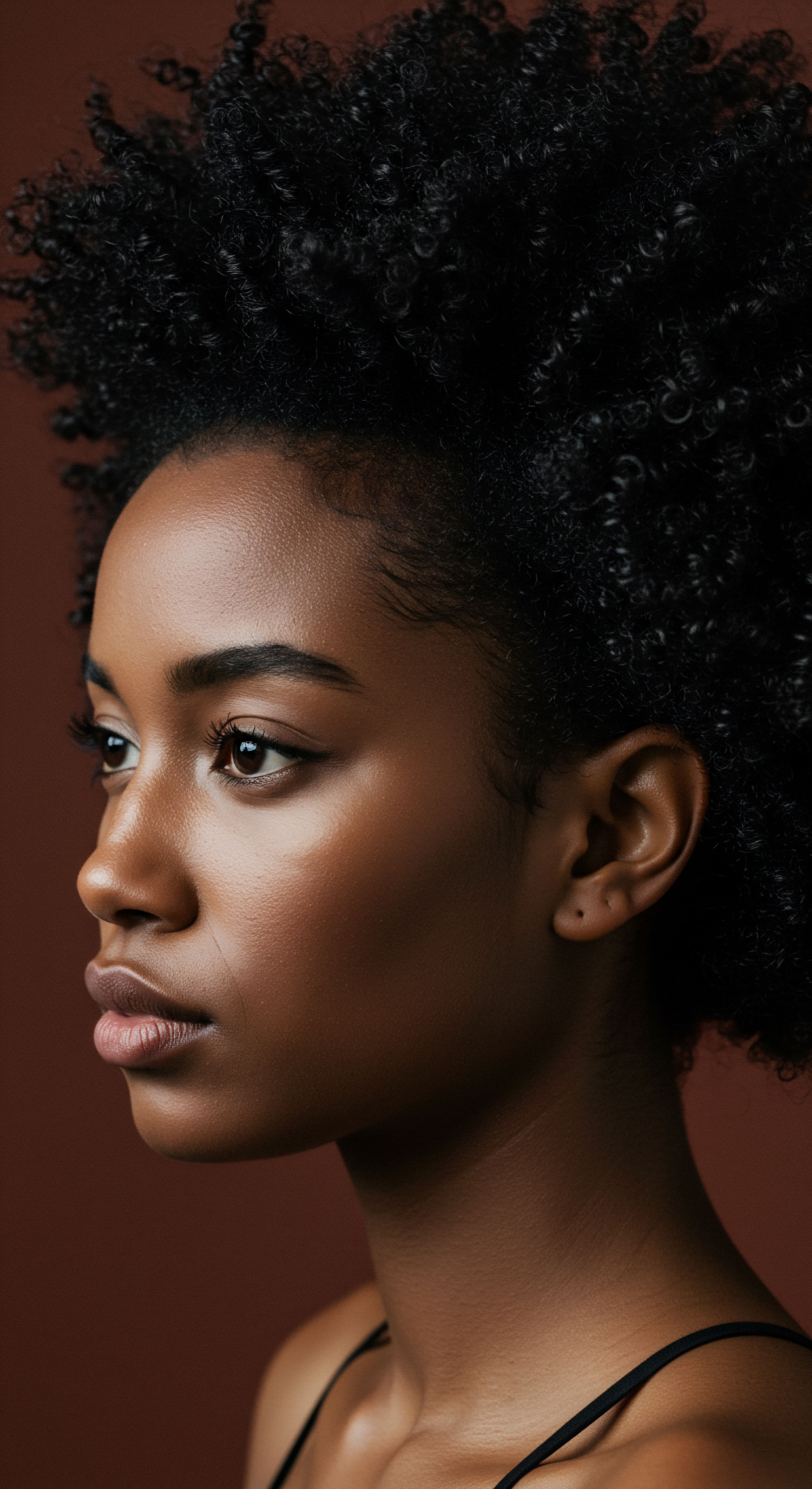
References
- Robbins, Clarence R. Chemical and Physical Behavior of Human Hair. Springer, 2012.
- Halal, John. Hair Structure and Chemistry Simplified. Milady, 2010.
- Evans, G. P. et al. “The structural implications of water hardness metal uptake by human hair.” International Journal of Cosmetic Science, vol. 33, no. 4, 2011, pp. 325-332.
- Luqman, M. et al. “Effects of hard water on hair ❉ A clinical study.” International Journal of Trichology, vol. 10, no. 4, 2018, pp. 165-168.
- Punyani, P. et al. “Hair cleansing frequency and its correlation with hair and scalp health ❉ A survey and case study.” Journal of Cosmetic Dermatology, vol. 20, no. 2, 2021, pp. 630-636.
- Srinivasan, R. et al. “Comparative study of tensile strength and elasticity of hair treated with hard and soft water.” International Journal of Hair Science, vol. 1, no. 1, 2011, pp. 1-4.
- Smith, L. “Water hardness and hair color fading ❉ A comparative study.” Journal of Cosmetic Dermatology, vol. 20, no. 1, 2021, pp. 300-304.
- Franco, Claudia. “Metal and Mineral Buildup and Oxidation Affect Your Hair and Skin.” Malibu C, 2022.
- Dawson, Tauni, and Min Kim. “7 Signs Metal in Your Water Is Damaging Your Hair and Its Color.” NewBeauty, 2022.
- Stollmeyer, Amy. “Hard Water Effects on Hair Color.” Simply Organic Beauty, 2023.